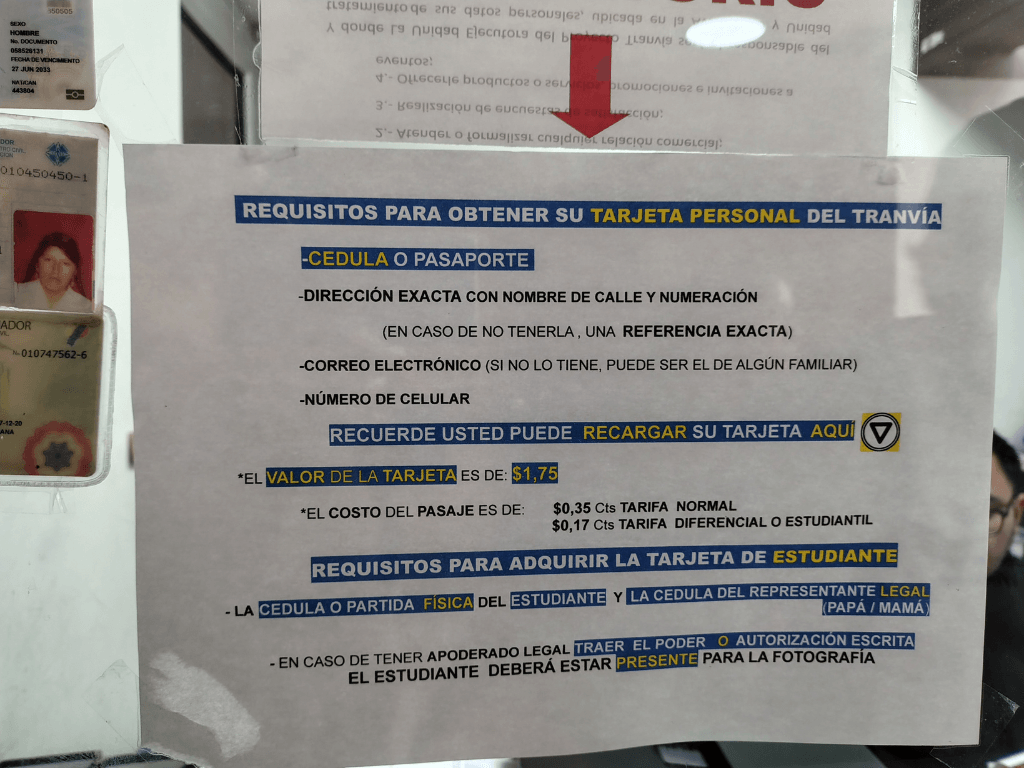Riding the Bus and Tranvia in Cuenca: What Expats and Visitors Need to Know
Public transportation in Cuenca is a crucial part of the city's rhythm. While generally reliable, a deeper look reveals some underlying challenges that affect everyone who uses the system. From the ongoing debate over bus fares to practical tips for a safe journey, here's a comprehensive guide to getting around Cuenca by bus.
The Battle Over Bus Fares
Not so long ago, Cuenca's bus system was defined by its old, blue buses. These vehicles, powered by aging diesel engines, were a constant source of frustration and a significant contributor to air pollution in the city. By 2016, a city-wide effort led by the administration of former Mayor Marcelo Cabrera began to replace the entire fleet with the modern red buses we see today. It’s been years since most residents have seen one of those old, smoke-spewing vehicles.
Despite this modernization, the system now faces a financial crisis. A clear agreement between the Chamber of Transport of Cuenca (CTC) and the Municipality dictates that bus fares must be reviewed and adjusted every two years to reflect current economic realities. Unfortunately, these studies have been neglected.
According to Diego Idrovo, the president of the CTC, bus units are operating at a loss. He cites a study from the University of Cuenca which shows that the monthly operational cost for a bus is between $5,650 and $6,861, while the average revenue (including subsidies) is only about $5,065.41. Idrovo also highlights the striking disparity in subsidies: the Tranvía, which serves roughly 22,000 users daily, receives a $7 million annual subsidy, while the urban bus system, which serves over 355,000 daily users, receives just over $1.5 million.
The reality is that Cuenca's public transportation is on a path toward collapse. The fleet of 475 urban buses is currently operating with 92% active and 8% in reserve. However, with the buses now having been in service for seven years, a season of high-cost maintenance and major part replacements is inevitable. Without the funds to handle these expenses, the number of active units could dwindle, leaving the system unable to cover its basic service.
Safety and Riding Tips
Despite the operational concerns, you can still feel safe when riding a bus in Cuenca. Unlike other cities where security incidents on public transport are a regular occurrence, major events are extremely rare here. Given Cuenca’s smaller size, word of any such incident spreads quickly through social media.
That said, one must always be cautious of pickpockets in Cuenca. They are a persistent problem on crowded buses and in busy areas. Stay aware of your surroundings, keep your bag close, and secure your belongings to avoid a moment of regret after a ride.
You should also be prepared for a bit of a bumpy ride. Many bus drivers in Cuenca have a habit of accelerating quite drastically. To avoid tripping or falling, always have at least one hand holding onto a pole or seat. It’s a good habit to have your bus card ready before you step onto the bus. Fumbling for your card with both hands while the bus lurches forward is a recipe for a fall.
Routes, Stations, and Payment Cards

Many Cuenca bus routes cut through the Historic Center. Buses heading south typically use Tomás Ordóñez, Coronel Talbot, and Juan Montalvo, while those heading north go via Tarqui, Estévez de Toral, and Calle Larga. Some lines also cross Huayna Capac, which separates the Historic Center from the Totoracocha sector. A useful tip to remember is that most bus lines will travel through the center and then turn around at a final stop to repeat the route in the opposite direction. If you miss your stop, you can simply ride the bus to the end and get on the first one going back.
For transfers and multi-line travel, the two main boarding stations are located at the El Arenal market and right next to the Cuenca Land Terminal (Terminal Terrestre). These are strategic hubs, connecting many bus lines and serving as key points of commercial and interregional traffic.
These two stations are also key locations for purchasing your electronic payment cards. While you can recharge your Cuenca bus card at countless mini-markets and shops around town, you can purchase it at the main stations.
The Cuenca Tranvía card, on the other hand, is a unique, personal card. If you lose it, you will need to get it deactivated before you can get a replacement. There are only four places in the city to purchase a Tranvía card. You'll need to present your passport or Ecuadorian cedula, provide personal information, and sign a terms of service agreement. Both cards have a standard cost of $1.75 and come with no credit, so be sure to add funds immediately.
Finally, to make navigating the routes and finding stops easier, I highly recommend using the Moovit app. I’ve found it to be very accurate with bus line routes and arrival times. If you are a frequent traveler, the paid subscription to remove ads is well worth it.
While Moovit is a great tool for planning your trips, it doesn’t help you find new destinations to explore. For that, you need a different kind of guide.
Discover interesting locations, top-rated restaurants, convenient markets, shops, banks, and many other wonderful navigation tips for Cuenca with our Interactive Cuenca Map. We’ll also be adding the Tranvia and Bus card purchase locations!
Get settled right in with the Cuenca Interactive Map.
Sources:
Tarifa de buses en Cuenca, Cámara de Transporte responde a cuestionamientos.
Periodista de las Calles - Nota o reportaje sobre situación del transporte público
Cuenca Comunica - Nota o reportaje sobre situación del transporte público
Código Cuenca - Nota o reportaje sobre situación del transporte público.
Unlock More Essential Expat Insights
Don't navigate the exciting, yet often complex, world of expat life in Cuenca alone. Our newsletter is your direct line to even more powerful insights on the specific pain points we've discussed, offering practical solutions and strategies gleaned from years of on-the-ground experience.
Beyond advice, we'll also share trusted recommendations for service providers – from reliable facilitators and legal experts to property managers and community groups – who consistently go the extra mile to support expats like you. Think of it as your curated list of allies dedicated to your successful transition and long-term happiness in Ecuador.






